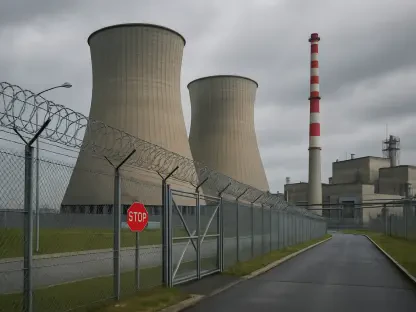With U.S. gas prices rising and global energy demands intensifying, natural gas companies in the United States are at a pivotal moment. Firms like EQT Corporation and Range Resources are adapting their spending and production strategies, aiming to capitalize on efficiency gains and strategic acquisitions. This market analysis explores current trends, technological advancements, and competitive maneuvers, explaining how major players are gearing up to optimize their operations now and for the future.
Evolution of the Gas Industry and Its Impact on Strategic Planning
The U.S. gas industry has experienced significant shifts, largely due to technological advancements and evolving market dynamics. The shale gas boom fundamentally altered how companies approached production, setting a precedent for prioritizing technological innovations. Alongside fluctuating global energy prices, these developments urged gas firms to reformulate strategies focusing on efficiency and strategic consolidations. Historical patterns suggest these factors serve as the bedrock for shaping current and future tactics in the industry.
Strategic Insights from Leading Gas Firms
EQT Corporation’s Focused Growth Pathway
EQT Corporation, one of the nation’s most prominent natural gas producers, has embarked on a path of strategic expansion. By choosing to decrease capital spending while simultaneously boosting output, EQT emphasizes refined well performance and efficiency. The acquisition of Equitrans Midstream stands as a testament to its strategy of pairing cost management with production growth. Challenges persist, primarily in integrating acquisitions without disrupting current operations, but the company’s plan presents lucrative opportunities for streamlined growth.
Range Resources’ Consistent Operations Strategy
Range Resources contrasts EQT’s approach with its focus on maintaining stable expenditure. Partnering with Liberty Energy and Imperial Land in Pennsylvania, Range Resources plans to bolster reliable energy solutions through collaborative ventures. This method leans toward stability over aggressive growth, yet it doesn’t insulate the company entirely from potential market fluctuations or technological shifts. Despite these challenges, Range demonstrates a robust commitment to delivering consistent results, focusing on innovation and sustainable practices.
Adapting to the Evolving Energy Market Landscape
The landscape for natural gas firms is multifaceted, marked by regional variations and emerging technologies. These dynamics bring about challenges and opportunities, particularly with the swift advancement of renewable energy solutions. Innovative approaches like carbon capture and storage are increasingly gaining attention, presenting firms with avenues for environmental responsibility. Misinterpretations about these technologies’ immediate benefits underline the need for clear communication strategies tailored to stakeholders’ understanding.
Future Projections: Navigating Regulatory and Technological Advances
As 2025 unfolds, U.S. gas firms are navigating a spectrum of technological shifts and potential regulatory changes. Innovations in drilling techniques and digital solutions promise to enhance operational yields, while global trade dynamics continue to influence strategic decisions. Industry leaders anticipate a more interconnected energy framework, pushing firms to embrace clean energy transitions, heighten environmental accountability, and refine competitive advantages.
Key Takeaways and Strategic Recommendations
The in-depth analysis of market strategies reveals actionable pathways for gas companies and stakeholders moving forward. Prioritizing systems that elevate efficiency, leverage synergies, and foresee regulatory shifts should serve as guiding principles. It is recommended that firms actively foster innovation ecosystems and explore alternative energy collaborations, underpinning comprehensive risk management frameworks. Stakeholders, including policymakers and consumers, are encouraged to engage with these dynamics, supporting the evolution toward sustainable energy endeavors and informed investment strategies. These efforts have poised the U.S. gas industry for continued relevance and resilience as it navigates an ever-changing global landscape.









